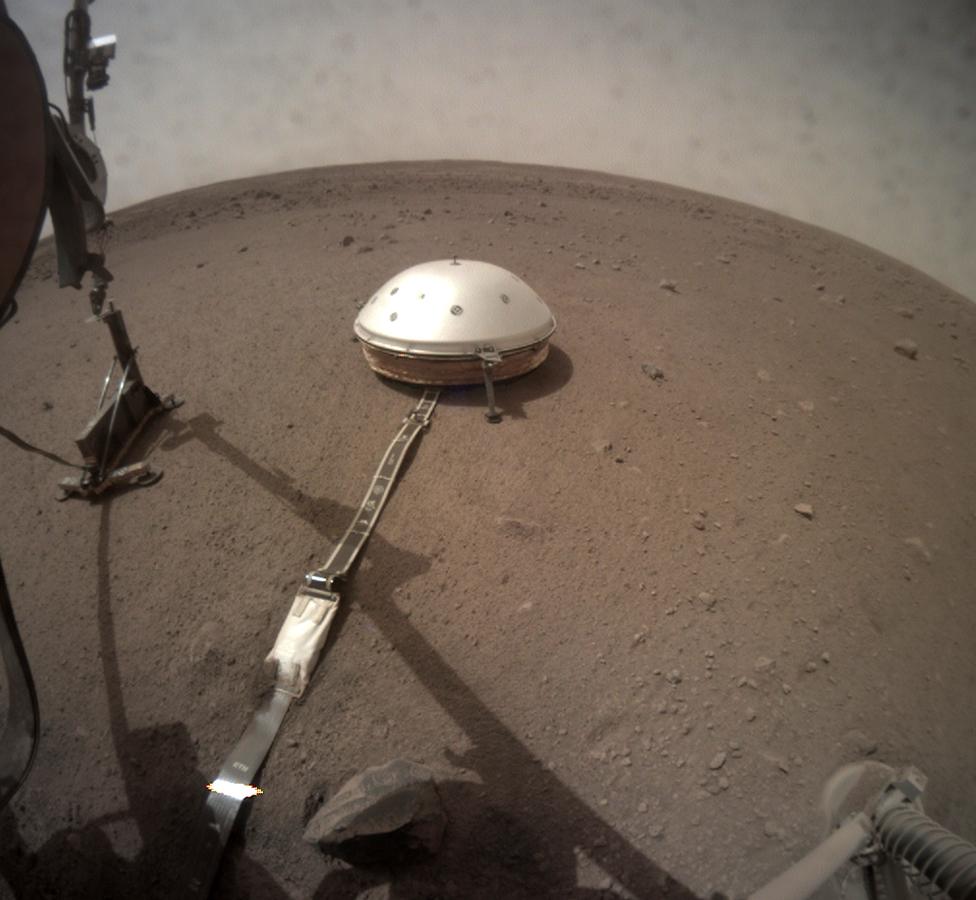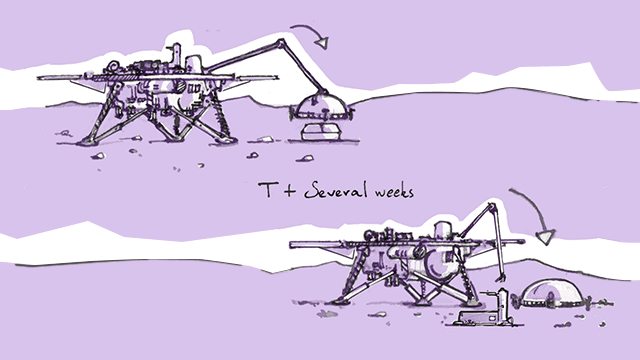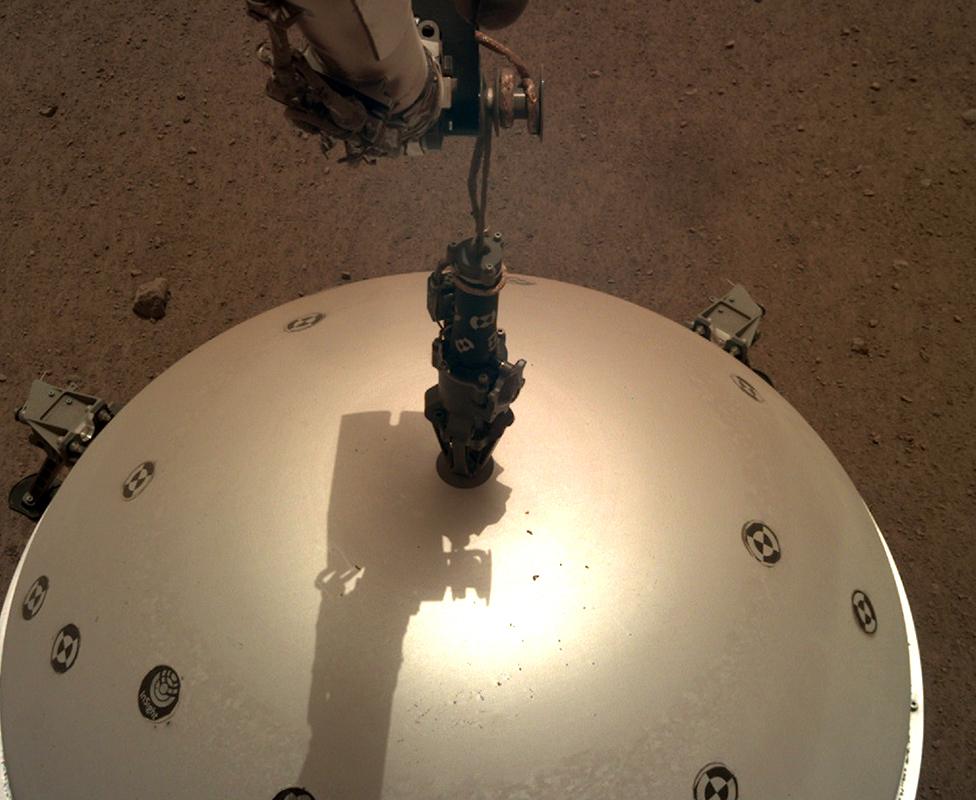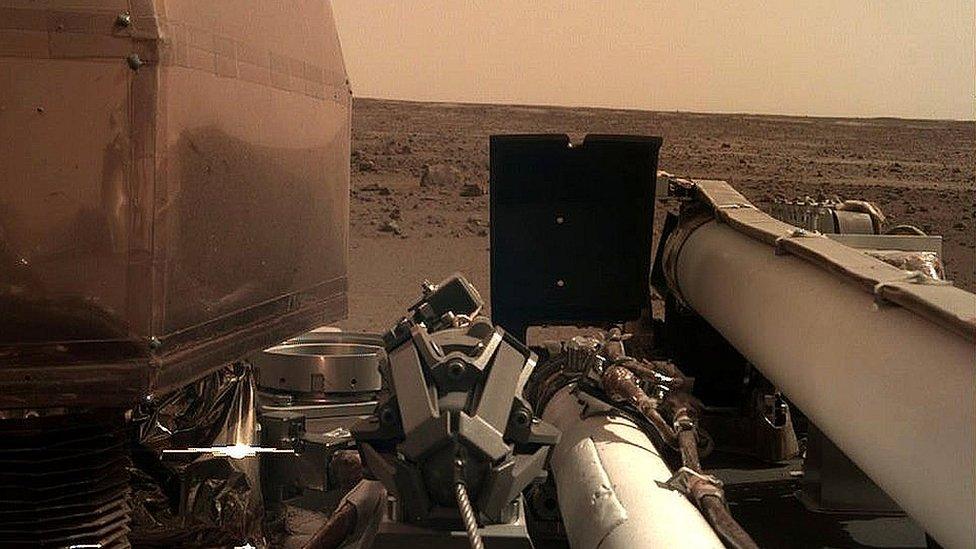Nasa's InSight mission: Mars 'mole' put on planet's surface
- Published

On the surface: HP3 is on the left; the domed SEIS is on the right

The US space agency's (Nasa) InSight mission has positioned the second of its surface instruments on Mars.
Known as HP3, the heat-flow probe was picked up off the deck of the lander with a robot arm and placed next to the SEIS seismometer package, which was deployed in December.
Together with an onboard radio experiment, these sensor systems will be used to investigate the interior of the planet, to understand its present-day activity and how the sub-surface rocks are layered.
Allow X content?
This article contains content provided by X. We ask for your permission before anything is loaded, as they may be using cookies and other technologies. You may want to read X’s cookie policy, external and privacy policy, external before accepting. To view this content choose ‘accept and continue’.
The Heat Flow and Physical Properties Package (HP3), external is a German-led instrument.
It incorporates a "mole" to drill down up to 5m below the surface.
The French-led SEIS system will be listening for "Marsquakes" and meteorite impacts. This is information that can be used to build a picture of the planet's overall structure - from its core to its crust.
But SEIS will also be monitoring HP3 when its burrowing activity gets going, because the local vibrations will say something as well about the underground materials in the immediate area.
The Nasa mission landed on Mars on 26 November.
Touchdown occurred on flat terrain close to the equator in a region referred to as Elysium Planitia.
The mission's experiments will run initially for one Martian year (roughly two Earth years).


On schedule: SEIS and HP3 were due to be positioned within weeks of landing




Seismometer deployment began at the end of December

Jonathan.Amos-INTERNET@bbc.co.uk, external and follow me on Twitter: @BBCAmos, external
- Published20 December 2018

- Published27 November 2018
